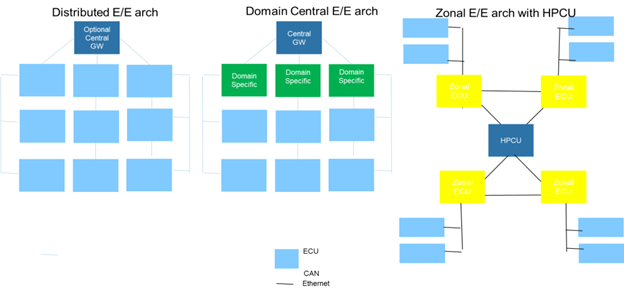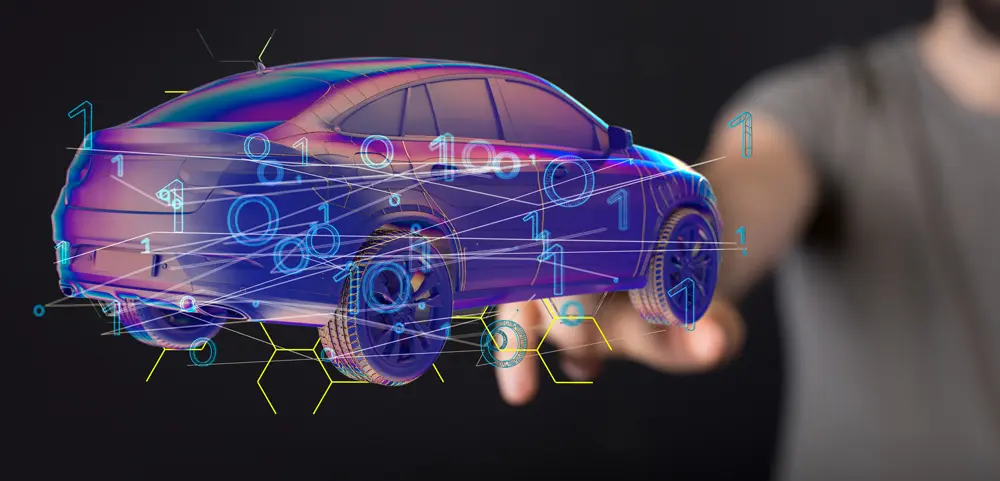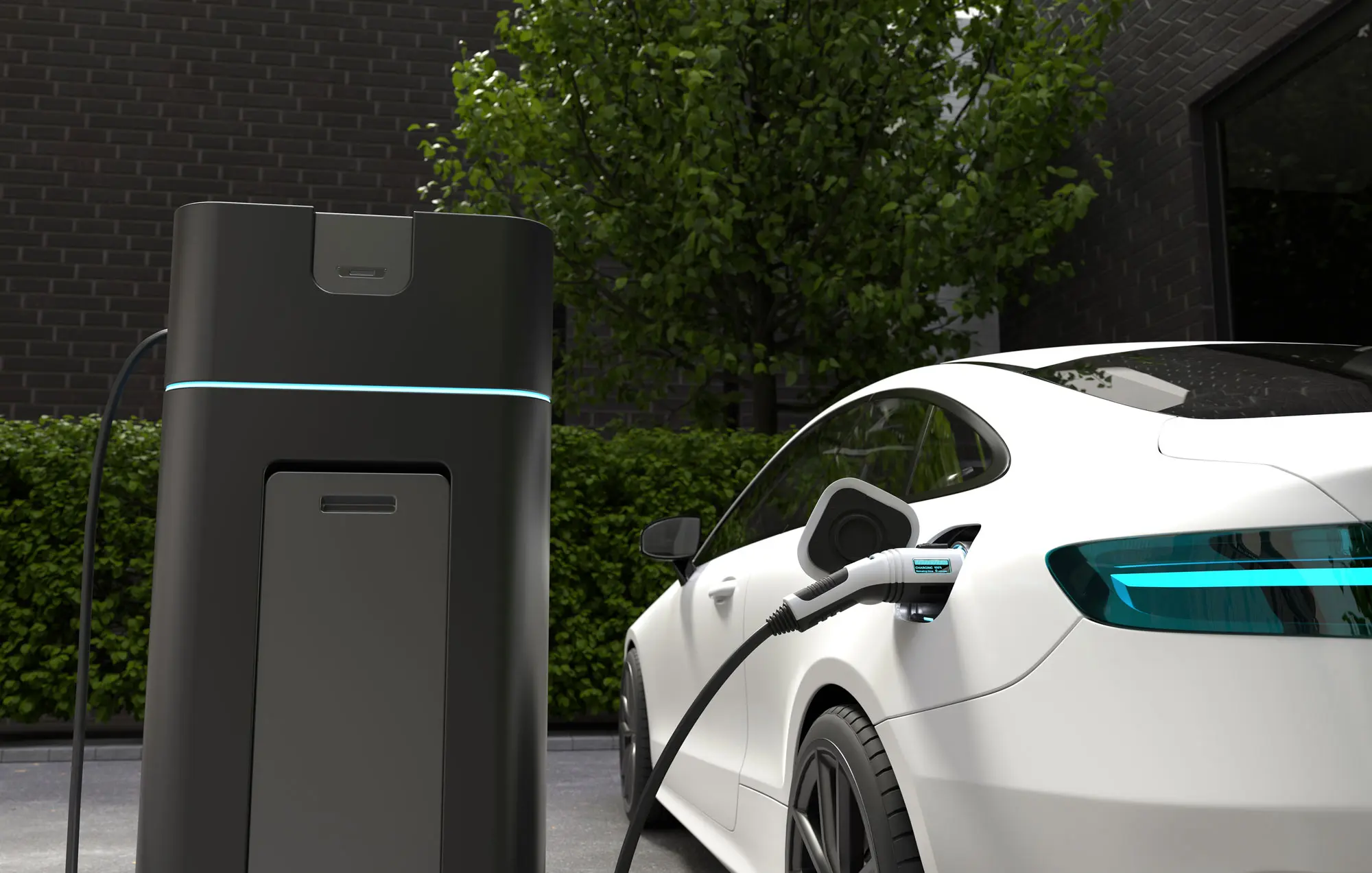The automotive industry stands at the cusp of a revolution, one that promises to redefine the very essence of vehicular transportation. As cars evolve from mere mechanical marvels into sophisticated software-defined platforms, the electrical and electronic (E/E) architecture underpinning them is undergoing a profound metamorphosis. This shift presents a complex landscape of challenges and opportunities for Original Equipment Manufacturers (OEMs) and their partners.
The Evolution of E/E Architecture

The journey of E/E architecture in vehicles has been marked by significant milestones, each representing a leap in complexity and capability. This evolution can be broadly categorized into three main stages:
- Distributed Architecture
- Domain-Centralized Architecture
- Zonal Architecture
In the early days, distributed architecture reigned supreme, characterized by function-specific ECUs interconnected via a Controller Area Network (CAN) bus, sometimes featuring an optional central gateway. This approach served well for its time, allowing for modular development and relatively simple integration of new features. However, as vehicle systems grew more complex, the limitations of this architecture became increasingly apparent.
The next evolutionary step brought us to the domain-centralized architecture, a more sophisticated approach that introduced domain-specific ECUs alongside function-specific control units. These components communicated through a hybrid network of CAN bus and Ethernet connections, with a central gateway ECU orchestrating the flow of information between domains. This architecture allowed for better integration of complex functions and offered cost optimization through function consolidation. For instance, a single domain-specific ECU could oversee the entire ADAS system, encompassing multiple function-specific controllers responsible for tasks such as vision processing and actuator commands.
The Future of SDVs – Zonal Architecture
Today, we stand at the threshold of the next great leap: zonal architecture. This innovative approach forms the backbone of software-defined vehicles (SDVs), addressing the limitations of their predecessors while opening new horizons of possibility. Key components of zonal architecture include:
- High-Performance Computing Unit (HPCU): A central powerhouse that processes data from various vehicle zones and manages overall operations.
- Zonal ECUs: Handle local processing and control within specific areas of the vehicle.
- Function-specific ECUs: Continue to manage specialized tasks.
- High-speed Ethernet connections: Enable rapid data transmission across the vehicle network.
The advantages of zonal architecture are manifold and far-reaching. It significantly reduces wiring complexity and weight, a critical factor in improving vehicle efficiency and performance. Modern cars typically incorporate 70 to 100 ECUs to manage their software systems, resulting in complex wiring harnesses that can weigh up to 60 kg and stretch over 5 km in length. Zonal architecture has the potential to reduce this complexity dramatically, consolidating functions and minimizing the need for extensive wiring.
The increased bandwidth provided by Ethernet connections accommodates the ever-growing volume of sensor data generated by modern vehicles. This is particularly crucial as we move towards higher levels of autonomous driving, where the ability to process vast amounts of data in real-time becomes paramount. Lower latency ensures critical functions respond with unprecedented speed, a factor that can make the difference between safety and danger in split-second decision-making scenarios.
Perhaps most importantly, this architecture enhances scalability, paving the way for future upgrades and maintenance. The centralized nature of the HPCU, combined with the distributed processing power of zonal ECUs, creates a flexible platform that can adapt to new technologies and features through software updates. This aligns perfectly with the concept of software-defined vehicles, where functionality can be added or modified throughout the vehicle’s lifecycle.
Challenges in Transitioning to Zonal Architecture

The path to this architectural nirvana is fraught with challenges, each demanding innovative solutions and strategic thinking. OEMs face several hurdles in transitioning to zonal architecture:
- Financial investment: Overhauling legacy systems requires substantial resources.
- Technical complexity: Redesigning the vehicle’s electrical layout demands a fundamental rethinking of component placement and interactions.
- Supplier coordination: The entire supply chain must evolve in tandem with OEMs.
- Software integration and cybersecurity: Centralized computing intensifies the complexity of software systems and security measures.
- Workforce upskilling: Engineers need new skills in high-performance computing, network design, and software engineering.
- Regulatory compliance: Advanced architectures must adhere to evolving international automotive standards.
- Testing and validation: Extensive processes are essential to ensure system reliability and safety.
The transition to zonal architecture and software-defined vehicles represents a fundamental shift in how we think about automotive design and engineering. It requires new skills, new technologies, and new ways of working. However, it also opens up new possibilities for innovation, creating vehicles that are safer, more efficient, and more responsive to user needs.
Quest Global’s Role in E/E Architecture Transformation

Quest Global brings extensive experience and multidisciplinary expertise to this transformation. Our approach to E/E architecture design is holistic, considering the entire vehicle ecosystem to ensure seamless integration of all components. We understand that the success of zonal architecture lies not just in the individual components but in their harmonious interaction within the larger system.
Our solutions for E/E architecture transformation include:
- Advanced software development: Creating robust, scalable solutions that harness the full potential of zonal architectures.
- Cybersecurity integration: Implementing multi-layered security approaches to protect against vulnerabilities in connected vehicle systems.
- Regulatory navigation: Ensuring compliance with current and future automotive standards.
- Supplier coordination: Facilitating seamless collaboration between OEMs and the entire supply chain.
- Testing and validation: Employing advanced processes to identify and resolve issues early in the development cycle.
Our software engineers employ advanced methodologies, including model-based design and agile practices, to create flexible, maintainable code that can evolve with the vehicle. Our expertise extends to real-time operating systems, hypervisors, and virtualization technologies, enabling the efficient use of powerful computing resources.
As the automotive industry continues its march towards fully software-defined vehicles, the importance of advanced E/E architectures grows. Quest Global is helping clients navigate the complexities of this new era. Our commitment to excellence ensures that we meet the challenges of today and anticipate the problems of tomorrow, keeping our clients at the forefront of automotive technology.
The future of automotive E/E architecture is filled with possibilities we are only beginning to explore. With Quest Global as a partner, automotive manufacturers can face this future with confidence, accessing the expertise, innovation, and dedication needed to succeed in this new era of software-defined vehicles.


